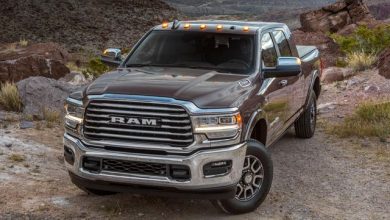4WD and AWD: What’s the difference?

Most car manufacturers today offer models with either 4-Wheel Drive (4WD) or All-Wheel Drive (AWD). If you have ever wondered how these two powertrains differ, you are not alone. Many people -even some that are in the car business- get these systems confused. This is especially true in the last few years as the lines between the two have blurred a bit. Thanks to some coaching from our technical consultants at Easterns Automotive Group (DC, Virginia, Maryland), we will explain how the differences.
4 Wheel Drive Systems
The first concept we want to nail down is that there aren’t just two types of drivetrains (4WD and AWD), technically there are three.
- Full-time 4-Wheel Drive
- Part-time 4-Wheel Drive
- All-Wheel Drive
Let’s take a look at each one.
Full-Time 4WD
Full-time 4WD is mostly found on heavy duty vehicles such as pickup trucks and larger SUVs. These systems basically do as they state, they power all four wheels continuously regardless of terrain or speed. The problem with full-time 4WD is that when engaged, transfer boxes, axles and hubs are all being driven and this makes for a noisy drivetrain, a vehicle that handles awkardly, and isn’t exactly thrifty on gas.
Part-time 4WD
4WD systems usually include three settings: 2WD, 4WD High, and 4WD Low. The 2WD setting is the only one that should be used on dry roads. The 4WD High setting can be used on slick roads, while the 4WD Low setting is useful for heavy pulling, tough off-road terrain, or when driving through deep sand or snow. The reason part-time 4WD has gone out of favor is that drivers should switch from 4WD to 2WD when the pavement is dry, which not only requires that they remember to do it, but also makes it tedious when travelling on patchy, snow-covered roads.
All-Wheel Drive
Today, AWD systems are common drive systems in cars, crossovers and SUVs. AWD drives are like smart 4WD systems. They deliver power to all four wheels, when needed, but without any input from the driver. A computer does all the shifting and engaging. While the way these AWD systems work varies a bit from manufacturer to manufacturer, they’re alike in that all-wheel drive is engaged automatically when needed.
Which is best for you?
If you use your vehicle for work or do a lot of trailering, then a good choice would be a 4WD vehicle. Generally speaking, 4WD vehicles are extraordinarily good in slipper conditions and are ruggedly built for years of use. For your family car, you can beat an AWD system. It’s a “smart 4WD” that funnels torque to the appropriate wheels when conditions are slippery.






